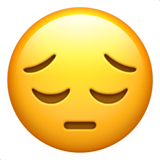Page 5 of 17
Re: Food Science B
Posted: December 27th, 2012, 11:54 pm
by PicturePerfect
cupcakegirl wrote:PicturePerfect wrote:How do you measure density with a triple beam balance and a graduated cylinder?
Also, I'm looking at the Food Science ppt. on the soinc.org website, and there's a slide about nutritional labeling. It asks for the total number of calories in one serving (based on the given nutrition facts label). How would I calculate this? (What contributes calories? I know fats, proteins, and carbs contribute calories, but what else? Sodium? Cholesterol?) Thanks!
Well you do know the formula for density right? Mass divided by volume. So measure the mass of a small cube of the cupcake, then either use a ruler or do water displacement to find the volume, then divide the mass of the cupcake by the volume to get the density.

As for calories, I'm pretty sure lipids, carbs, and proteins are the only nutrients that contribute calories to a product. If you are doing the math on a random practice label, keep in mind that they may round the amounts but have the exact calories so it might not come out perfect, but is should be pretty close.
For calculating, all you need to remember is 9-4-4. 9 calories/gram of fat, 4 calories/gram of carbohydrate, 4 calories/gram of protein. If you know that, all that is left is some simple multiplication.

Yeah, I know the formula, but at an invitational I went to, they asked my partner and I to measure the density of a liquid. So I would use a graduated cylinder to get the volume, but how would I get the mass? (I feel like such an idiot...

)
Edit: Thank you for the info on calories!

Also, where could I find some practice nutrition label problems?
Re: Food Science B
Posted: December 28th, 2012, 6:29 am
by Skink
What other instruments or equipment did they give you?
Re: Food Science B
Posted: December 28th, 2012, 10:47 pm
by PicturePerfect
Skink wrote:What other instruments or equipment did they give you?
I assume you're talking to me, so..
They gave us a graduated cylinder and triple beam balance.
Re: Food Science B
Posted: December 29th, 2012, 12:28 pm
by Skink
PicturePerfect wrote:I assume you're talking to me, so..
Not really. I was talking to myself

PicturePerfect wrote:They gave us a graduated cylinder and triple beam balance.
Perfect! I mean, picture perfect! Nevermind...the triple beam balance measures mass. Measure the mass of the liquid+container and subtract out the container.
So, after getting the volume reading, put the graduated cylinder on the triple beam balance and measure its total mass. Then, get rid of the liquid (into another container if you have it) and measure the mass of the cylinder by itself. Subtract it out.
mass of liquid = mass of cylinder with liquid - mass of empty cylinder
Then, divide the mass of the liquid by the volume. Make sure to watch the units. Make sense?
Re: Food Science B
Posted: December 29th, 2012, 3:59 pm
by Nerdy One
hard event but i love it
Re: Food Science B
Posted: December 30th, 2012, 2:55 pm
by PicturePerfect
Skink wrote:PicturePerfect wrote:I assume you're talking to me, so..
Not really. I was talking to myself

PicturePerfect wrote:They gave us a graduated cylinder and triple beam balance.
Perfect! I mean, picture perfect! Nevermind...the triple beam balance measures mass. Measure the mass of the liquid+container and subtract out the container.
So, after getting the volume reading, put the graduated cylinder on the triple beam balance and measure its total mass. Then, get rid of the liquid (into another container if you have it) and measure the mass of the cylinder by itself. Subtract it out.
mass of liquid = mass of cylinder with liquid - mass of empty cylinder
Then, divide the mass of the liquid by the volume. Make sure to watch the units. Make sense?
Heehee! Thanks

Nerdy One wrote:hard event but i love it
That it is.
Re: Food Science B
Posted: December 31st, 2012, 11:11 am
by Beastybob12345
My standard curve isn't working out very good because I tried many different ingredients, but the timings were WAY to spaced apart to make the curve understandable.
Is there any way to fix this problem?
Re: Food Science B
Posted: December 31st, 2012, 8:17 pm
by PicturePerfect
Hi! I see you're a Division B student in CA? Maybe I'll see you at a competition!
About your standard curve.. Maybe you should try retiming them? You might be stopping the timer at different times. Also, you should have a list of ingredients in the rules that you should try. Those seem to be sufficient; I don't think you will need to try other ingredients. My teacher had us make one graph for 'flowing' liquids like water and another one for 'dripping' liquids like honey. That might help.
Re: Food Science B
Posted: January 3rd, 2013, 11:12 am
by Beastybob12345
Thanks pictureperfect. Making the 2 separate graphs is a better idea. And see you at the regionals maybe

Re: Food Science B
Posted: January 3rd, 2013, 1:26 pm
by PicturePerfect
No problem, and maybe!
